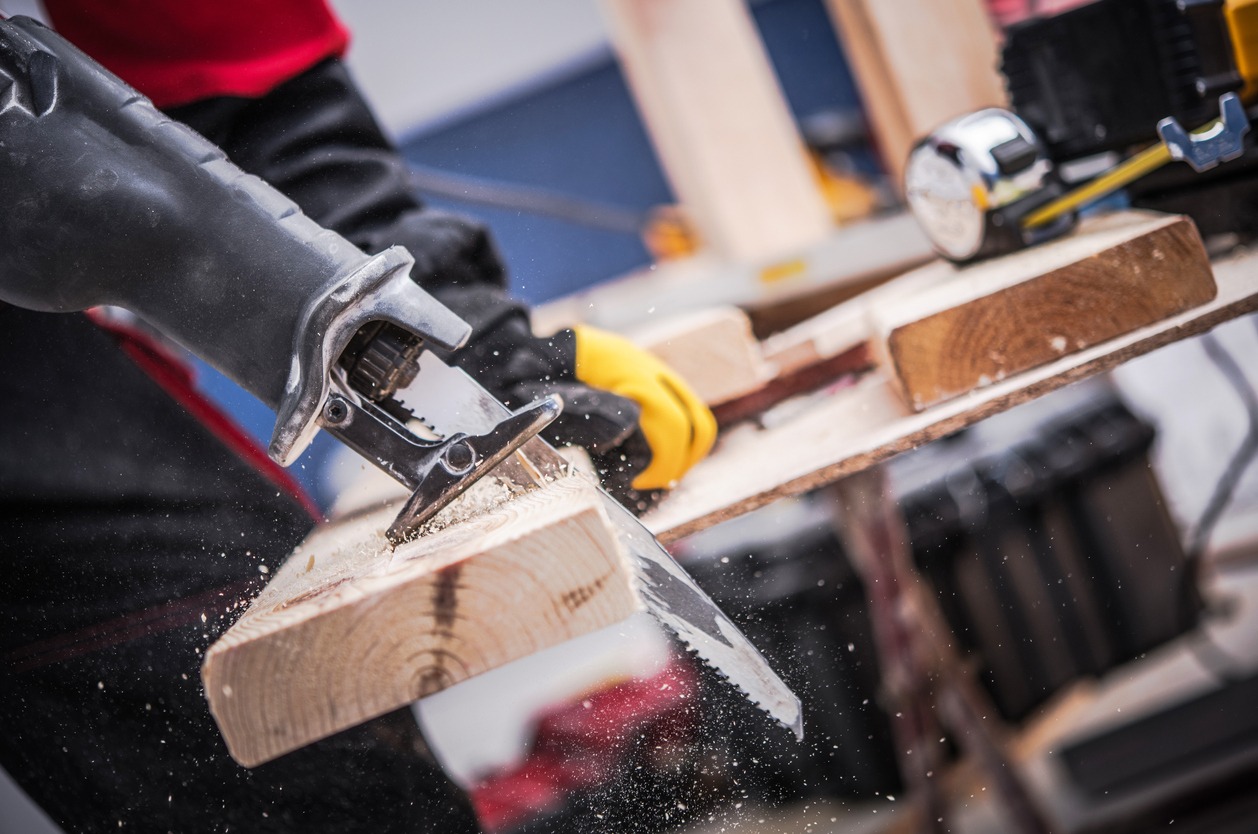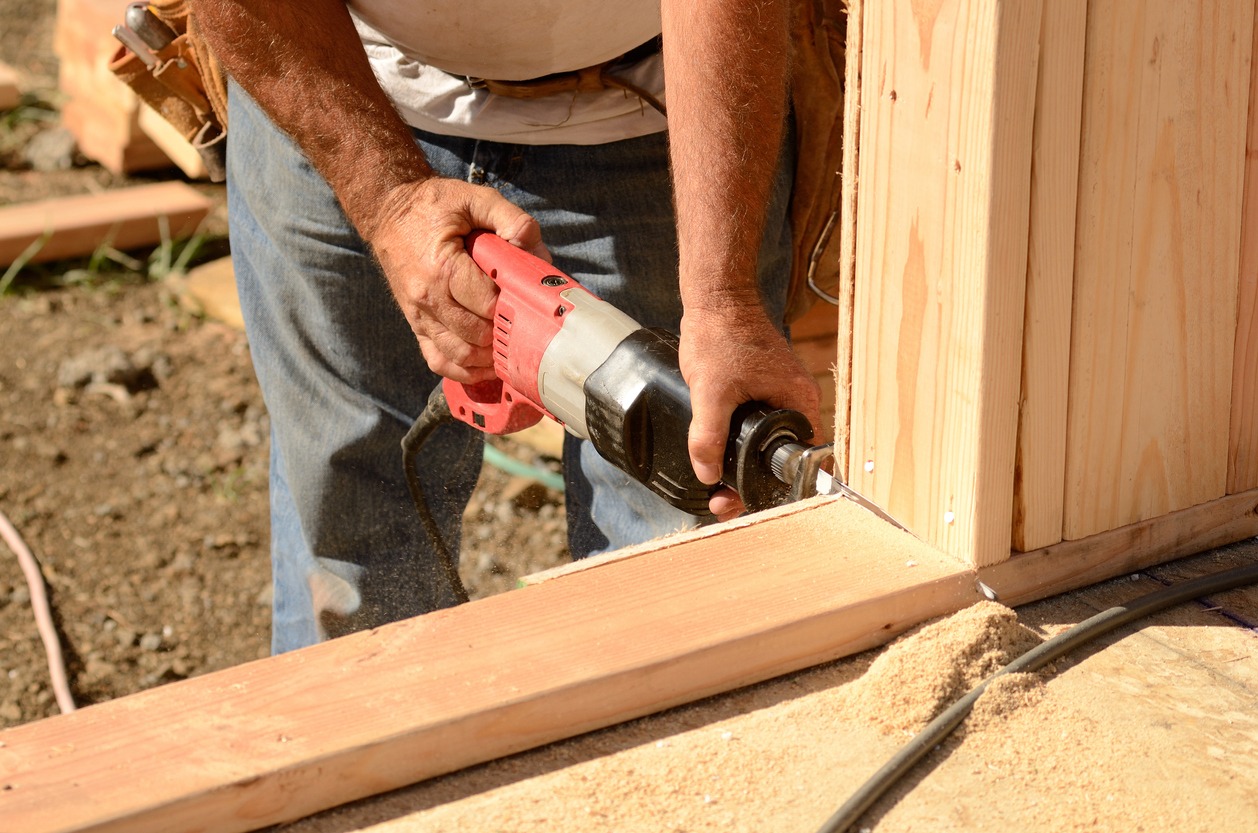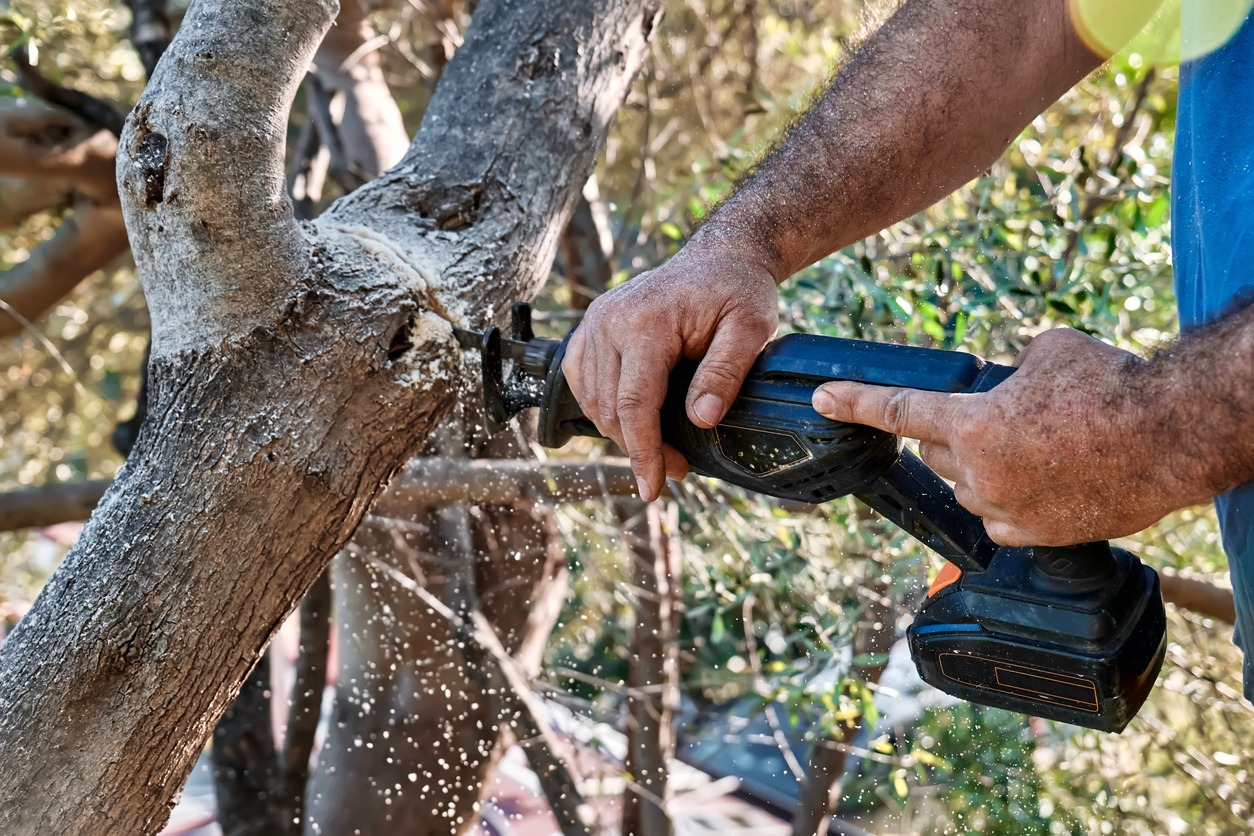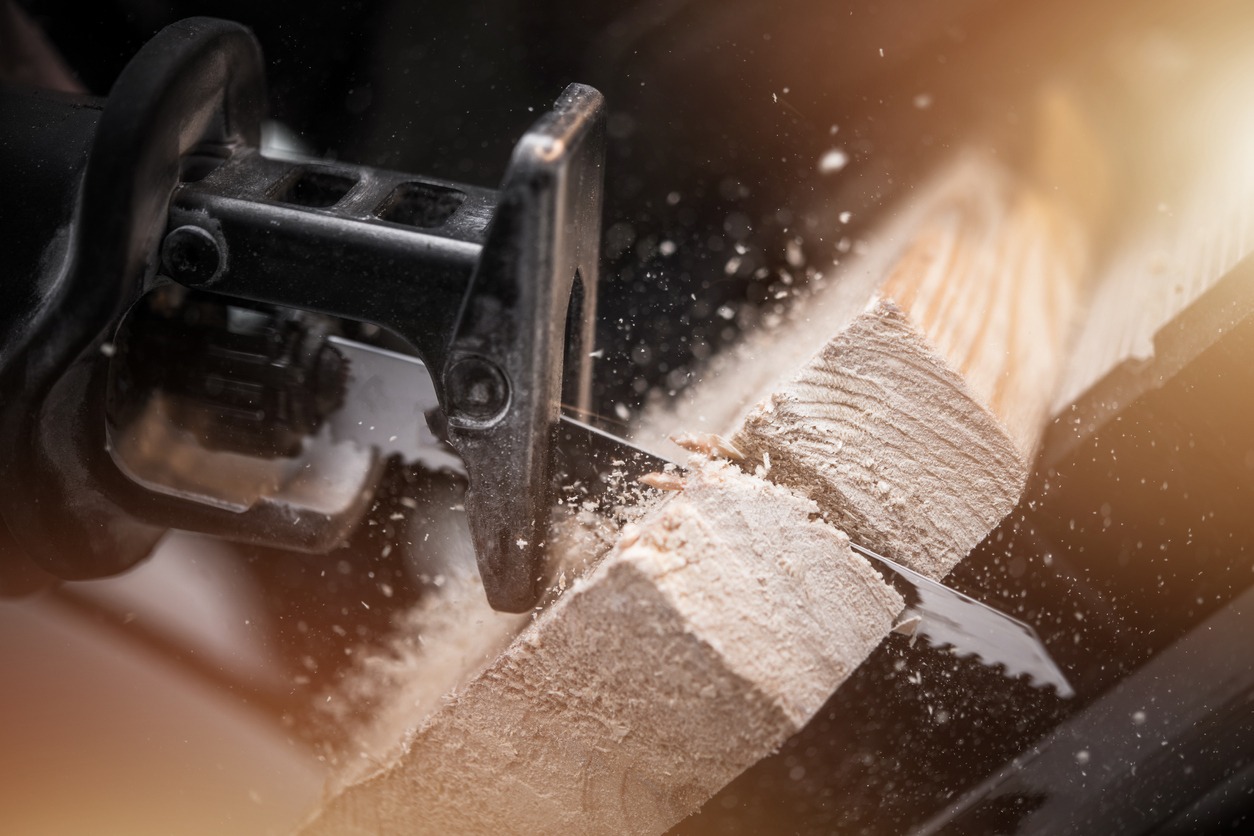Also known as a saber saw, a reciprocating saw is usually associated with demolition and remodeling jobs. You can use it to cut and rip out material around the windows and doors, because that is the most time-consuming part of replacing them. It can also help you cut through plasterboard, nails, PVC pipes, even cast iron. People typically reach for it when hammers and crowbars fail. But this is not the only thing a reciprocating saw can do.
A reciprocating saw is also useful for cutting timber, and other wooden boards and frames. Outside of remodeling and demolition, this hardworking tool is compatible with a range of attachments which make it a truly versatile piece of equipment. Any DIYer or enthusiastic homeowner can use a saber saw to expand the scope of their upcoming project.
What is a Reciprocating Saw?
A reciprocating saw is a powerful, yet portable, handheld tool that uses the back and forth action of the blade or any other attachment to modify a vast array of materials. It gets its name from the back and forth cutting motion of its blade.
It isn’t meant to be used as a tool for fine crafting projects or jobs that require precision, A reciprocating saw is quite versatile and can be used in a variety of projects. It features an exposed blade, so you can directly reach to cut material in any area, including tight spaces. So, if you are stuck in between your project because your regular saw cannot reach a particular area, it’s time to get a reciprocating saw.
You can use it for cutting from the ladder or above your head (such as cutting wooden beams or slicing through pipes in the ceiling).
Types of Reciprocating Saws
Reciprocating saws are gas or electricity powered with electric saws being more common. There are two types of electric reciprocating saws — plug in and battery-powered.
Plug in Reciprocating Saw
A plug in model is a corded reciprocating saw that runs over electricity from a wall outlet. The power rating of these saws generally ranges from 1100 to 1400 Watts, which can be much higher for heavy–duty reciprocating saws.
Battery-Powered Reciprocating Saw
As the name suggests, a battery-powered reciprocating saw relies on a battery pack as its source of power. These machines are portable as there is no cord to tie you down. Being cordless, they become easily transportable too. All you need to do is have a good amount of charge and you are good to go. However, once the charge runs out, you won’t be able to use it. Not to forget the long recharging times that some of these saws can take.
Reciprocating Saw Uses
With its changeable blades and compatibility with numerous attachments, a reciprocating saw is a versatile tool. Here are some ways you can use one:
Demolishing in Awkward Spaces
A reciprocating saw comes in handy when you are involved in a demolishing project. It can facilitate your demolition efforts by helping you cut through framework and studs. Using a sledgehammer for the same purpose may feel cathartic, however, the physical effort involved will soon tire you out.
A reciprocating saw will quickly and efficiently slice through a material, provided you are using the right blade . You can also switch from wood cutting blade to metal sawing one if the project also involves dealing with metal drywall framework. With its compact, narrow profile you should not face any difficulty in working in small, tight places.
Cutting Nails, Bolts, and Tough Pieces of Wood
A reciprocating saw is powerful enough to cut through all sorts of materials, including wood and metal. Most models come with a standard demolition blade that you can use to make quick work of wooden studs, nails, screws, pins, and other small metallic pieces that are often embedded in construction material.
Pruning Shrubbery Around Your Yard
As we mentioned above, a saber saw is not just meant for demolition purposes. You can also use it for creative projects, such as pruning the shrubs and trees around your yard. When equipped with a wood cutting blade, a reciprocating saw can cleanly slice through overgrown branches to give your yard a more maintained and organized appearance.
Sawing Plumbing Pipes
Woodworkers and construction workers are not the only ones who have use for a reciprocating saw. Plumbers also have to deal with a variety of materials to get their work done. These include digging through concrete, cutting pipes to the right size, removing old fixtures and plumbing lines to install new ones, and cutting wall studs.
A reciprocating saw with its various attachments comes in handy in all of these tasks. It can cut horizontally, vertically diagonally, and at just about any angle. No matter how the plumbing lines and fixtures are installed, a saber saw can help you make repairs or upgrades to existing plumbing.
Scraping Adhesives
A reciprocating saw with scraper attachment can easily scrape away various adhesives including mastic and glue. You can use it to remove glued-down carpet, deal with stubborn flooring, or lift up tiles. The scraping blade can slide under these materials, gradually lifting the material with each thrust from the saw. It all happens very quickly and efficiently, saving you from a lot of manual effort.
Removing Grout
Another useful application of a reciprocating saw is removing grout. Use it with a grout rake attachment and the power tool will make a quick job of removing grout while retiling a shower. The grout rake attachment is a slightly curved blade with a coarse-grit surface that moves through grout with ease. It works with both sanded and unsanded cement-based grouts as well as with epoxy grout lines.
Safety Precautions For Using a Reciprocating Saw
Using a reciprocating saw is fairly easy. You simply place the blade on the spot where you want to start cutting the material and press the trigger. As it cuts through it, you move it forward. However, you have to be very careful while using it. Here are some safety precautions that you should observe.
- A reciprocating saw can also create a lot of noise and vibration. Cover your ears with protective gear and follow safety instructions as per product manual
- Be cautious when using this tool for cutting above your head, as dust and debris can fly into your eyes and the rest of your face. Make sure you’re wearing a pair of goggles or safety glasses, and a dust mask.
- Always make sure that you are holding it firmly because a reciprocating saw can kick back when it comes in contact with a hard material.
- When changing the blade, make sure that the reciprocating saw is unplugged and the switch is in “off” position to prevent accidents.
- You can use a reciprocating saw in creating plunge cuts on drywalls – but before you do that particular job, first make sure where electrical wiring and plumbing are exactly located to make sure you don’t end up cutting through them.
Conclusion
A reciprocating saw is a hardworking and versatile power tool. While demolition and remodeling projects are the most common reciprocating saw uses, it can also help you out in plumbing, DIY, garden maintenance, and electrical jobs. The power tool is portable, safe to use, has well-insulated wires and does not give you blisters in the hand because of soft grip handles. However, you need to be very careful and cautious while using it, while regular care and maintenance prolongs its life and helps ensure that it is always in optimal working condition.




